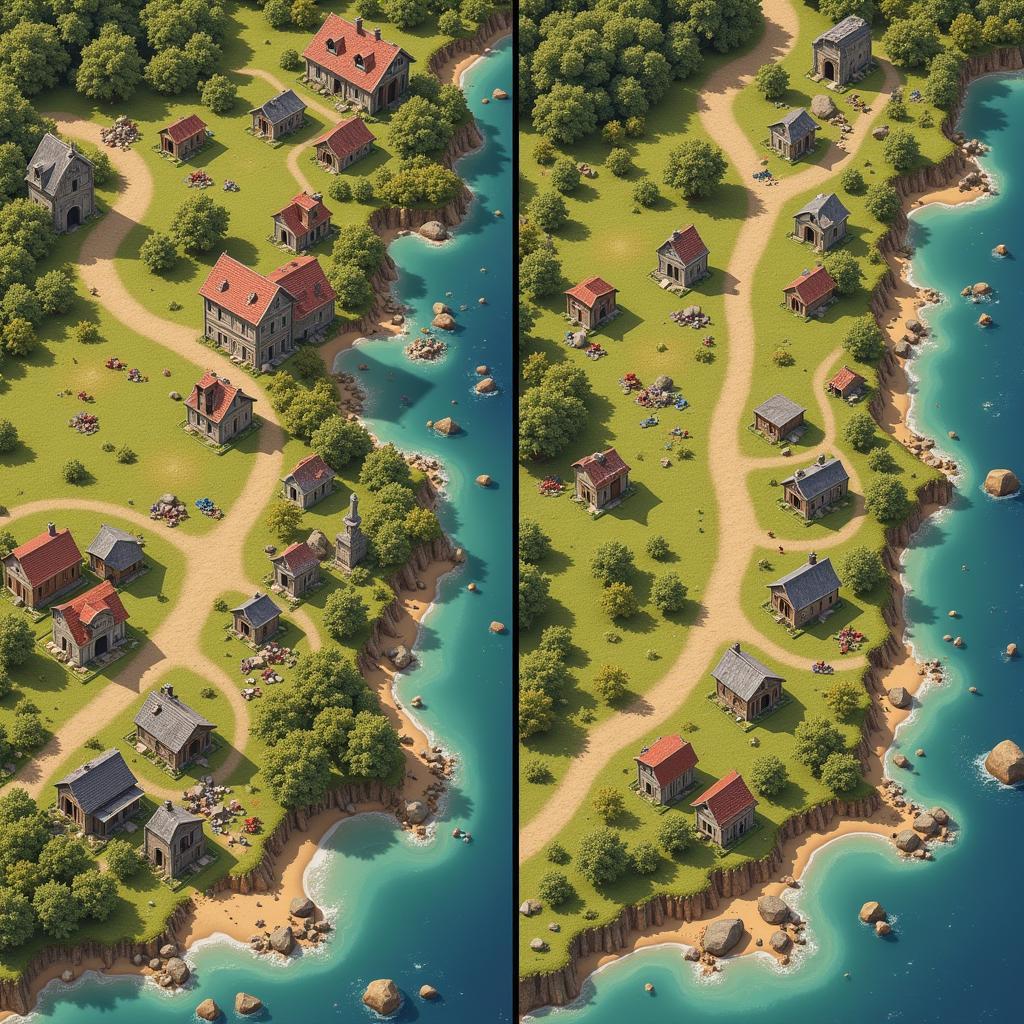The Map Ribbon, a seemingly simple element in level design, possesses the power to guide, engage, and immerse players within your game world. More than just a navigational tool, the map ribbon acts as a subtle yet compelling storytelling device, weaving narratives through its twists, turns, and visual language. In this comprehensive guide, we’ll delve into the intricacies of crafting masterful map ribbons that elevate your game design to new heights.
The Art of Visual Guidance: Beyond Basic Navigation
While its primary function is to orient players within the game environment, the map ribbon transcends mere utility by transforming into an art form. Through deliberate design choices, you can seamlessly integrate this element into the overall aesthetic and narrative of your game.
Color as a Storytelling Tool:
Don’t underestimate the impact of color. Employ contrasting hues to differentiate between main paths and optional routes, subtly hinting at the potential risks and rewards associated with each. A fiery red might signify a challenging path filled with obstacles, while a calming blue could represent a more serene, albeit potentially less rewarding, journey.
Shape and Form: Speaking Volumes:
The very shape of your map ribbon can convey a wealth of information. A winding, intricate path might suggest a sense of mystery and exploration, while a straight, direct route could imply urgency or a race against time. Consider the emotional impact you want to evoke and let the ribbon’s form mirror those sensations.
Seamless Integration: Weaving the Ribbon into Your World
A truly effective map ribbon doesn’t just exist in a vacuum; it blends seamlessly with the game world, enhancing the player’s immersion rather than disrupting it.
Contextual Clues and Landmarks:
Instead of relying solely on generic icons, consider incorporating recognizable landmarks or environmental cues directly into your map ribbon’s design. This not only aids in navigation but also reinforces the player’s mental map of the game world.
Dynamic Adaptation: Reflecting the Journey:
Imagine a map ribbon that dynamically changes its appearance based on the player’s actions or the game’s narrative progression. This dynamic approach adds a layer of depth and responsiveness, further blurring the line between the game world and its navigational aids.
Elevating Player Engagement: Beyond Simple Directions
By thinking beyond the utilitarian aspects of map ribbons, you can transform them into tools that actively engage players and enhance their overall experience.
Foreshadowing and Intrigue:
A well-placed bend or a sudden change in color can pique the player’s curiosity, subtly foreshadowing upcoming challenges or rewards. This creates a sense of anticipation and encourages exploration, driving players forward with a blend of curiosity and excitement.
Visual Storytelling: A Picture Speaks a Thousand Words:
Consider incorporating subtle visual cues within the map ribbon itself to tell a story or reveal lore. Perhaps a series of faded icons depict the remnants of a past civilization, or a change in texture hints at a shift in the game’s atmosphere. These subtle details enrich the game world and reward attentive players.
 Map Ribbon Player Engagement Techniques
Map Ribbon Player Engagement Techniques
Crafting Map Ribbons: Best Practices and Considerations:
Creating impactful map ribbons is both an art and a science. Here are some best practices to keep in mind:
- Clarity Over Complexity: While intricate designs can be visually appealing, prioritize clarity and readability.
- Consistency is Key: Maintain a consistent visual language throughout your game’s map system to avoid confusion.
- Test and Iterate: Don’t underestimate the importance of playtesting. Gather feedback and refine your map ribbon’s design to ensure it effectively guides and engages your players.
Conclusion: The Path to Unforgettable Level Design
The humble map ribbon, often overlooked, holds immense potential for enriching your game world and elevating the player experience. By embracing its capacity for visual storytelling, subtle guidance, and dynamic engagement, you can transform this seemingly simple element into a powerful tool that leaves a lasting impression.
Need help with other creative game design elements? Check out our guides on mail art ideas and back to school props for more inspiration.
FAQ
1. What software can I use to create map ribbons?
Many game engines offer built-in tools for creating map systems, while others allow for integration with dedicated level design software.
2. How can I make my map ribbon accessible to players with visual impairments?
Consider incorporating alternative navigation aids like audio cues or haptic feedback to enhance accessibility.
3. Are there different types of map ribbons for different game genres?
Absolutely! The design and functionality of your map ribbon should align with the specific needs and conventions of your chosen genre.
4. What are some common mistakes to avoid when designing map ribbons?
Overcrowding the ribbon with too much information, using unclear or inconsistent visuals, and failing to integrate it seamlessly with the game world are some pitfalls to avoid.
5. How important is it to update the map ribbon in real-time during gameplay?
The level of dynamism depends on your game’s design. However, even subtle updates can enhance immersion and provide valuable feedback to players.
Need further assistance with crafting captivating game worlds? Contact us at Phone Number: 0902476650, Email: [email protected], or visit us at 139 Đ. Võ Văn Kiệt, Hoà Long, Bà Rịa, Bà Rịa – Vũng Tàu, Việt Nam. Our 24/7 customer support team is ready to assist you. Explore our website for more articles and resources, including insights on decor tree design.





